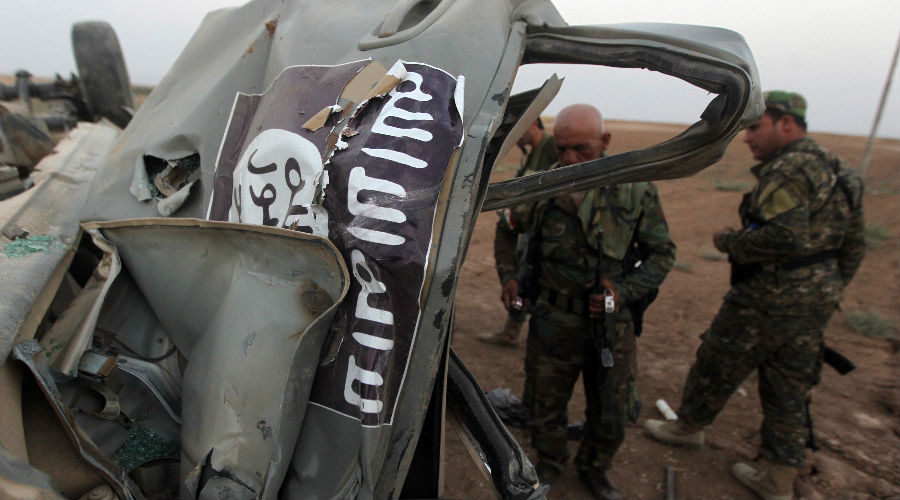ISIS was quick to make false claim of responsibility for the deadliest mass shooting in U.S. history, that was carried out on October 1, 2017 by American citizen Stephen Paddock killing 59 people and injuring 529 others at a Las Vegas country music festival. The claim made without any evidence indicates the terror group’s desire to send out a message that it is still capable of carrying out high-profile attacks and using whatever means available to address the issue of a significant decline in its activity, especially in Syria and Iraq. Such claims do raise questions about new tactics the group is employing to counter existing challenges that amounted to an organizational collapse following its defeat in Mosul.
Various Tactics
ISIS seeks to maintain its pace of terrorist activity both to survive and strengthen its position as the world's leading terror organization through multiple cross-border mechanisms of which the following stand out:
1- Inflammatory Propaganda. ISIS’ unfounded claim of responsibility for the Las Vegas massacre serves as a significant indication to its bid to use media propaganda to incite its sympathizers to carry out more terrorist attacks across the world in response to the US-led global coalition’s military strikes against it in the Middle East, particularly in Iraq and Syria. To this end, it issued inflammatory statements and speeches delivered by its commanders. In a 46-minute audio recording published in late September by ISIS-linked Al-Furqan news organization, the group’s reclusive leader Abu Bakr al-Baghdadi delivered a speech refuting Iranian and Russian claims that he was killed in May.
In his latest message, al-Baghdadi also urged his fighters to remain steadfast after a series of major defeats across Iraq and Syria, and even referenced current international crises including North Korea’s escalating nuclear threats against the US, South Korea and Japan. Moreover, to prove that the audio message was recorded recently, al-Baghdadi, whose last public recording was released in November 2016, as the battle for Mosul was starting, also made reference to Mosul which fell in early June, when Russia claimed that it might have killed Baghdadi in an airstrike.
Simultaneously, ISIS continues to publish its two flagship publications, al-Naba and Rumiyah, in a bid to reach more potential young militants around the world.
2- Re-vitalizing Franchises to reduce the implications of its declining activity in Iraq and Syria and prevent a potential collapse of its franchises seen as its most effective tools for reinforcing a bid to maintain its ranking as the world’s top terror organization. This is possibly among the organization’s motives to redeploy militants in southern Libya recently as several reports indicated.
3- Inciting Lone Wolves. These represent one of the options that allow ISIS to claim responsibility for terrorist attacks carried out by terrorists linked to it ideologically but not organizationally. Lone wolves struck out recently in Western capitals and cities. Most recently, a car-ramming and stabbing attack was carried out in Canada earlier this month in which four people were injured.
4- Inciting ISIS-affiliated Groups. Unlike its main branches i.e. the extra-territorial or far-flung provinces, new groups loyal to ISIS emerged across the world. ISIS incites these groups to carry out incessant terrorist attacks. For instance, an ISIS affiliate carried out a surprising attack in Marawi City in Mindanao, the Philippines, and was able to seize control of some districts since May 23, 2017. The attack forces the Philippines authorities to announce martial law in the south to enable the army and police forces to eliminate the group.
5- Non-traditional attacks. ISIS was also quick to claim responsibility for the June 7, 2017 attacks that hit the Iranian Parliament and the mausoleum of Ayatollah Khomeini in central Tehran to reaffirm that it is capable of attacking targets not hit before. The development took place despite views that Iran likely has ties with ISIS that made the terror group stop short of carrying out attacks inside Iran before June 2017. These ties are evidenced by the fact that Iran already established ties with al-Qaeda.
6- Ideological Re-energization of Supporter Base. The groups sought to expand its supporter base across the world to strengthen its ability to spread its ideology and reduce the impact of strong blows it received recently. Interestingly, the group’s recent propaganda and statements were deliberately focused on its ideology and encouraged followers to try to spread it as much as possible.
In light of this, calls emerged for an expansion of the confrontation with ISIS to include ideology-based approaches that go hand in hand with the military approach currently pursued by several involved regional and international powers. Such an expansion would address the group’s persistent bid to attract more sympathizers to mitigate a recent decline in its activity and influence.


